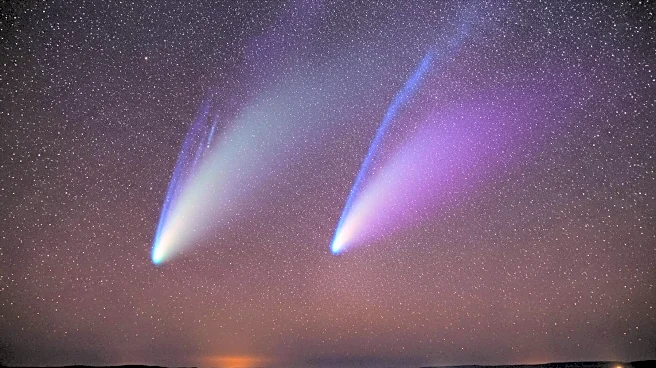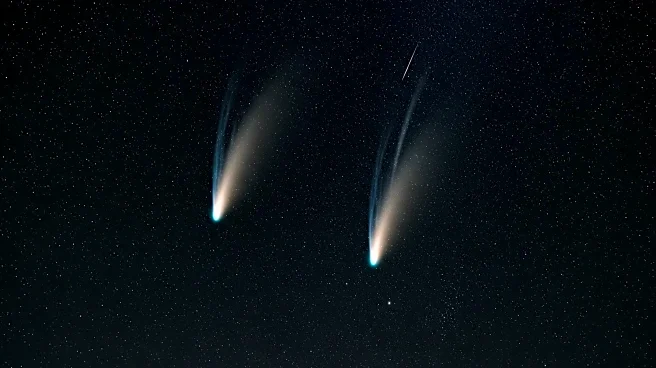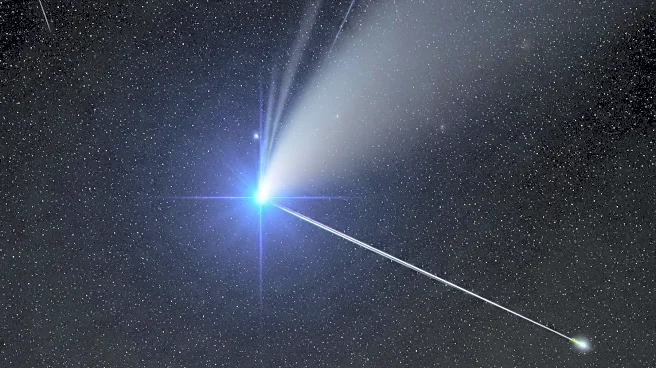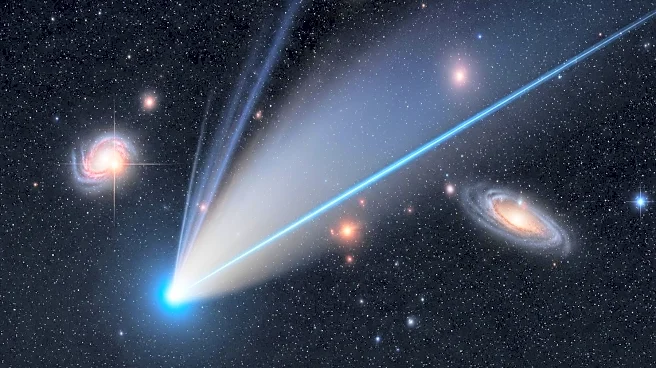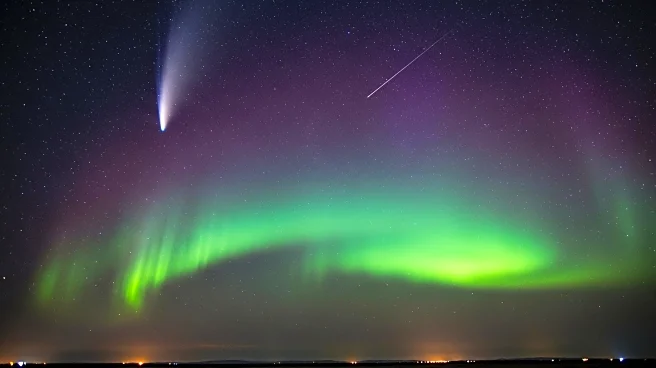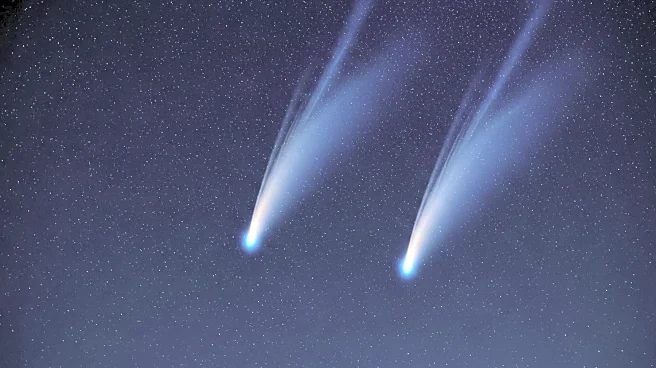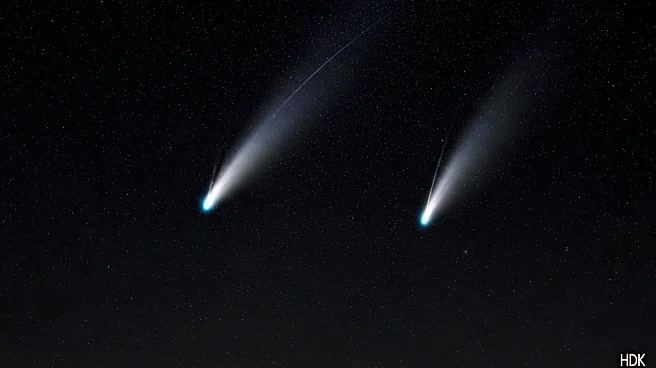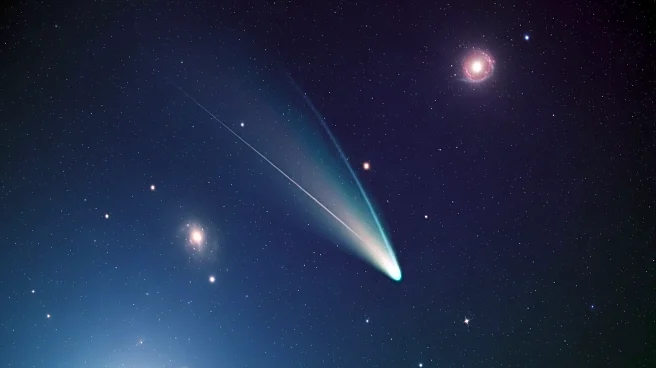What's Happening?
Two newly discovered comets, C/2025 R2 (SWAN) and C/2025 A6 (Lemmon), are set to become visible in the night sky this month as they make a close approach to Earth. Comet SWAN will be closest to Earth on October 19, followed by Comet Lemmon on October 21. SWAN was discovered by amateur astronomer Vladimir Bezugly using NASA's SOHO satellite, while Lemmon was spotted at the Mt. Lemmon SkyCenter observatory in Arizona. Both comets are expected to be visible to the naked eye, with SWAN best viewed in the Southern Hemisphere and Lemmon in the Northern Hemisphere. SWAN is currently moving north and will be visible near the Libra constellation, while Lemmon will be near the Big Dipper.
Why It's Important?
The appearance of these comets provides a unique opportunity for astronomers and skywatchers to observe celestial phenomena that are not frequently visible. Comets are remnants from the early solar system, and their study can offer insights into its formation and evolution. The visibility of these comets may also spark public interest in astronomy and space exploration, potentially inspiring educational initiatives and increased funding for scientific research. Additionally, the comets' close approach to Earth allows for detailed observation and data collection, which can contribute to our understanding of cometary composition and behavior.
What's Next?
As the comets approach their closest points to Earth, astronomers and enthusiasts will be preparing to capture images and data. Observatories and amateur astronomers will likely coordinate efforts to track the comets' paths and analyze their brightness and composition. Public interest may lead to organized viewing events, especially in regions where the comets are most visible. Following their closest approach, the comets will continue their journey around the Sun, with Lemmon expected to round the Sun on November 8, potentially offering further observation opportunities.
Beyond the Headlines
The discovery and observation of these comets highlight the importance of international collaboration in space research. The use of both professional observatories and amateur astronomers in identifying and tracking these celestial bodies underscores the value of diverse contributions to scientific discovery. This event may also prompt discussions on the role of technology in enhancing our ability to detect and study distant objects in space, as well as the potential for future missions to explore comets up close.

